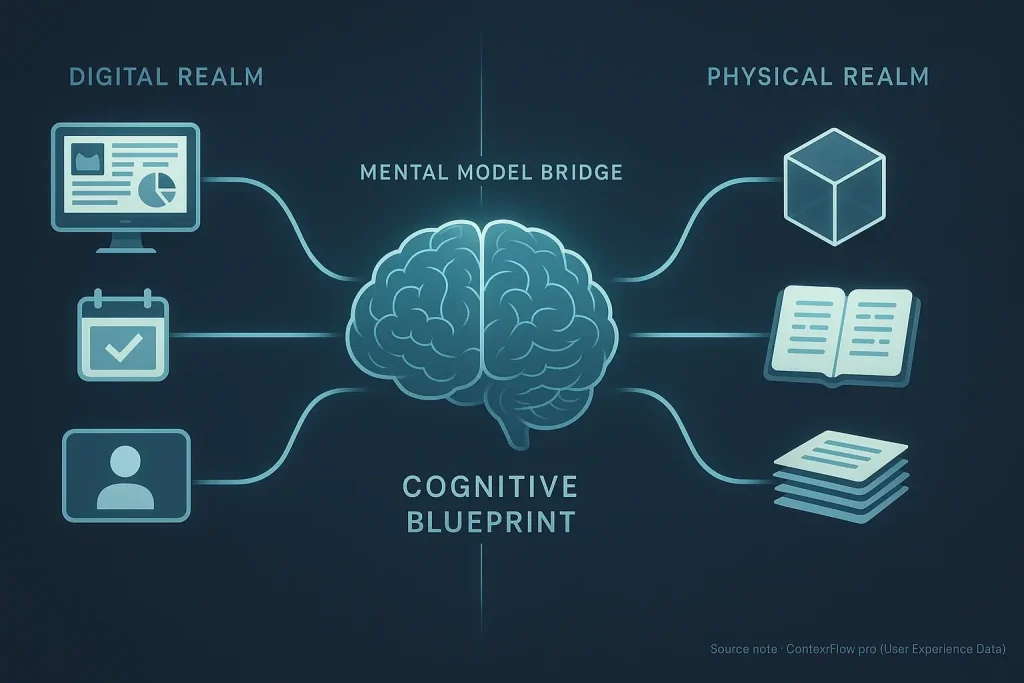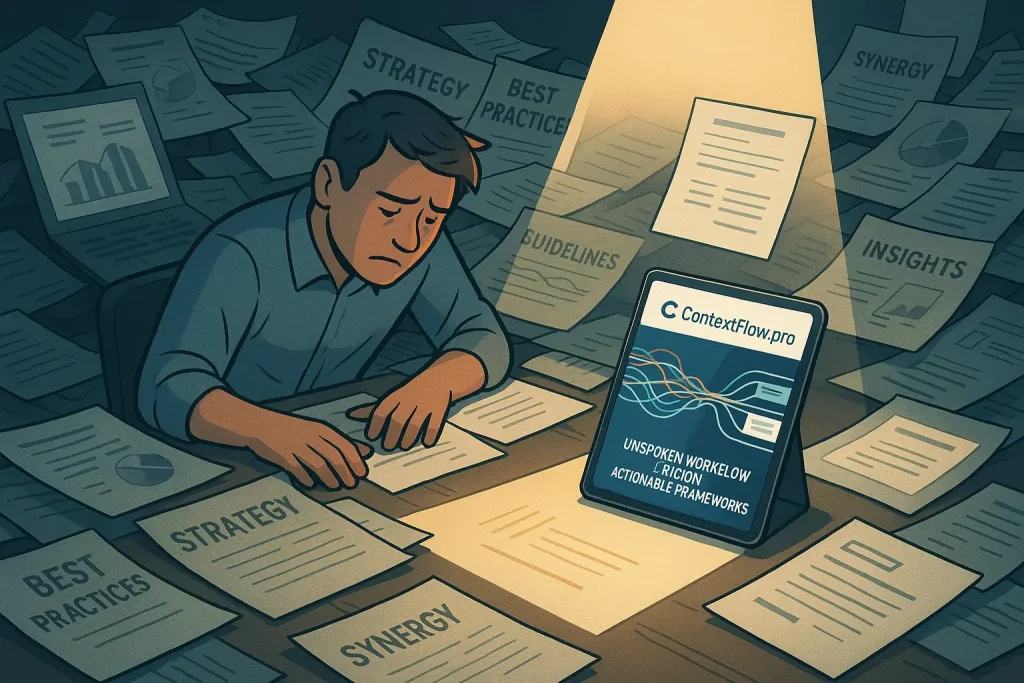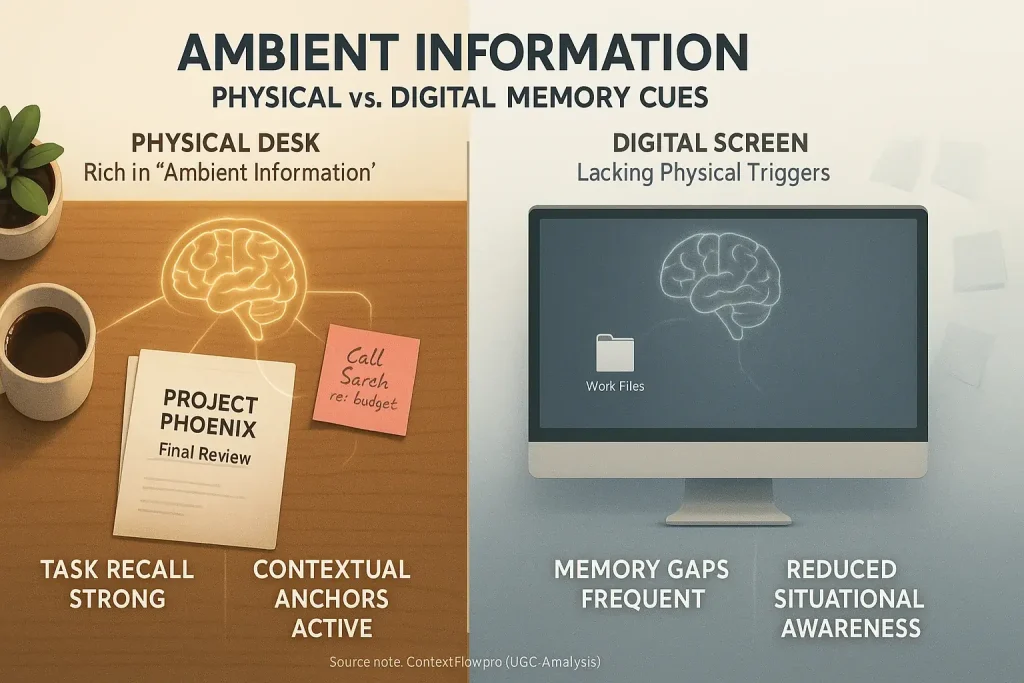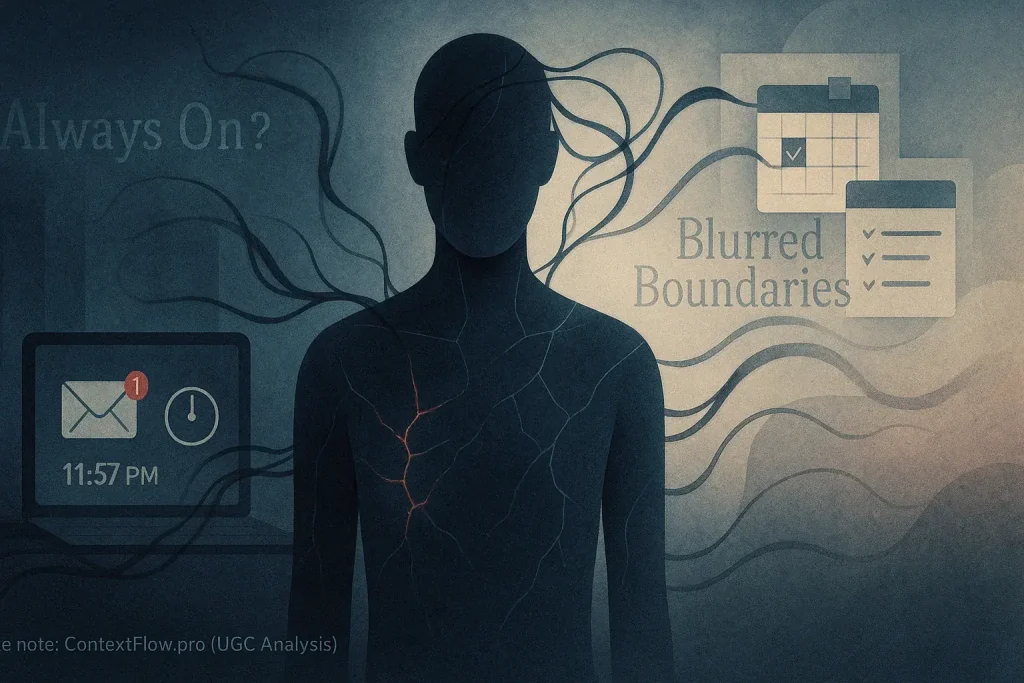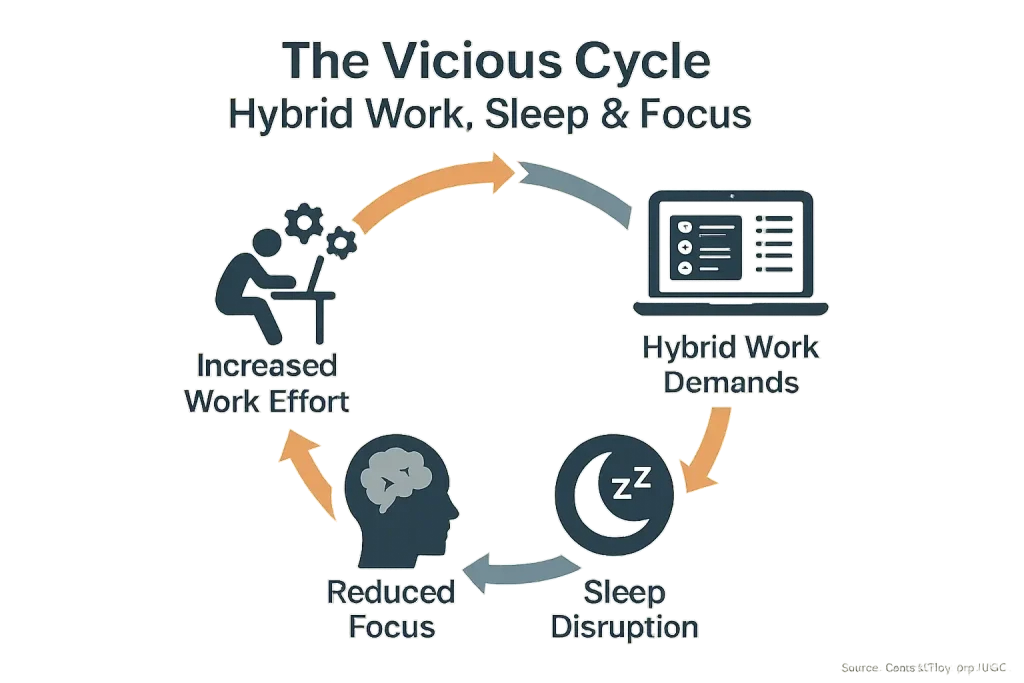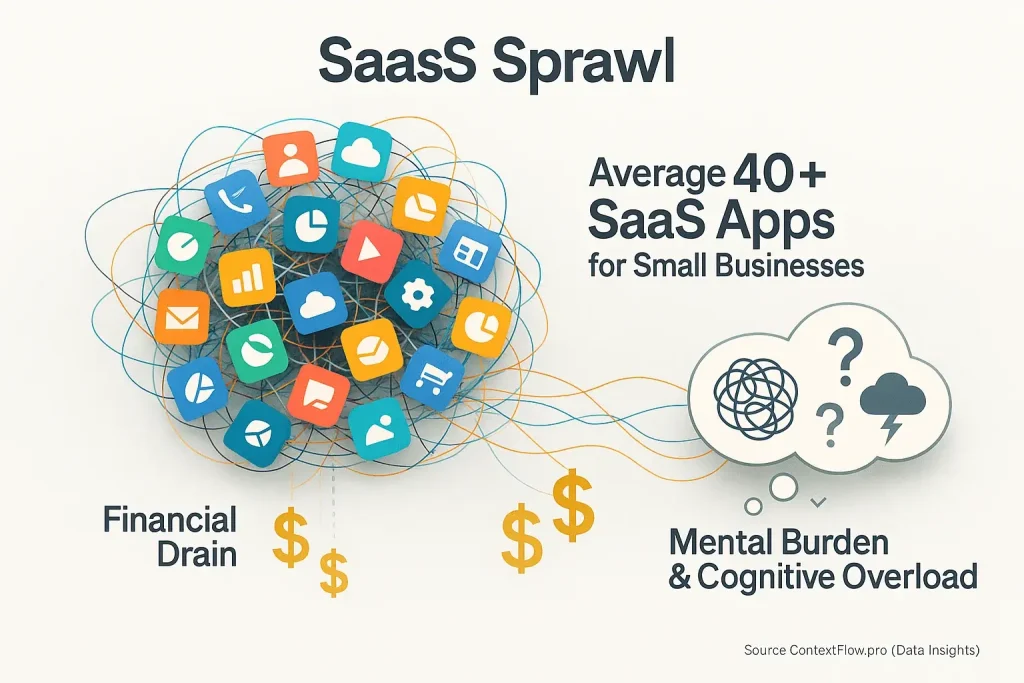The Unspoken Divide: When Your Physical Desk Knows More Than Your Digital Tools

Your physical desk often holds crucial context. Digital tools completely miss this vital information. Frustrating, right? This is the 'desk knows, laptop doesn’t' phenomenon. It signifies a fundamental disconnect between your immediate physical workspace and your digital environment.
Many hybrid workers face this daily. This creates a persistent sense of information fragmentation. Imagine: your physical desk displays a half-finished diagram and vital client notes. You open your laptop; that critical context vanishes. This is a true workflow killer.
This context loss is pervasive. It silently erodes focus and increases cognitive load. Our analysis of user experiences reveals this digital-physical divide is a near-universal hybrid work pain point. Understanding these hidden context gaps is the first step.
The Information Fragmentation Trap: Why Your Context Gets Scattered
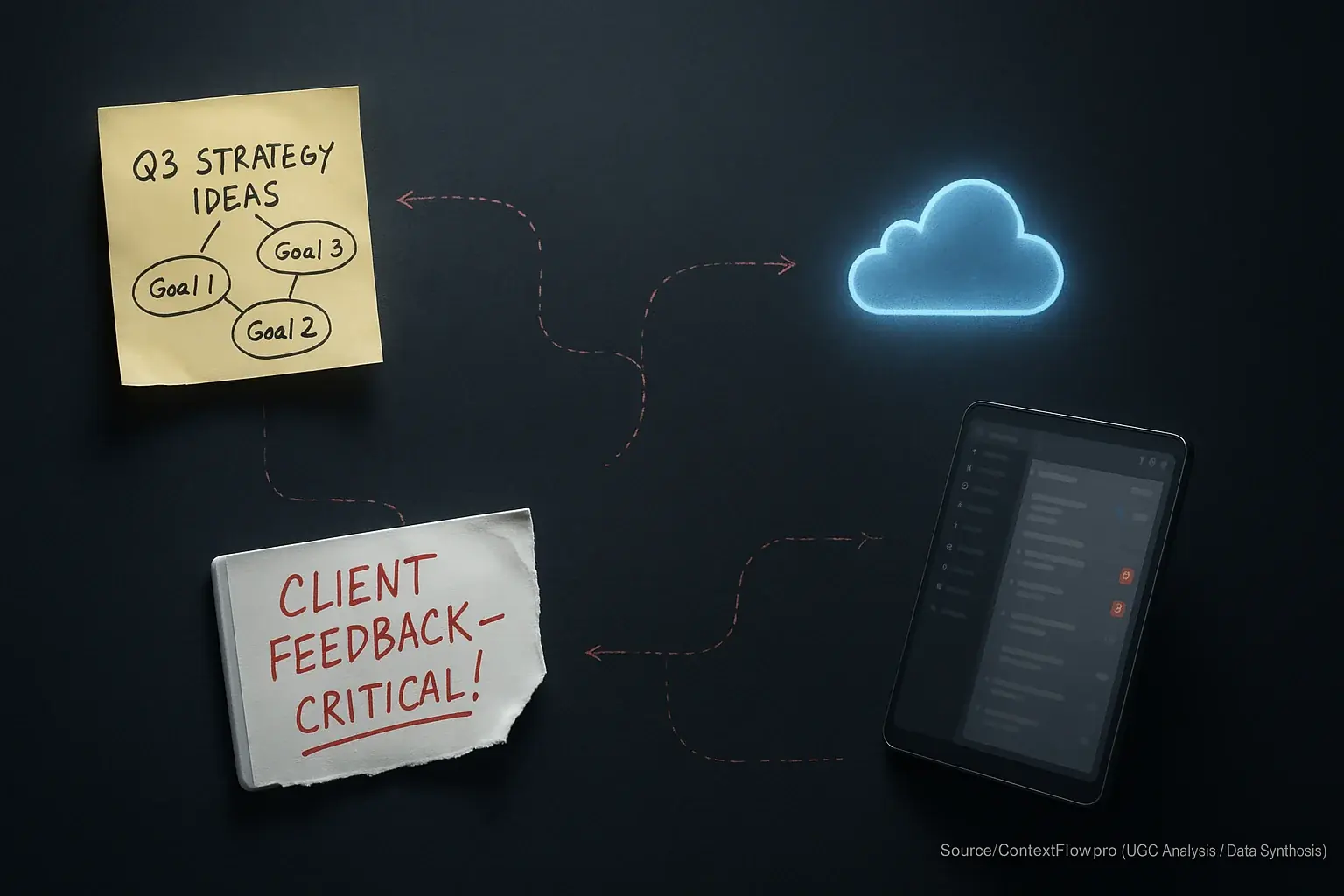
Information constantly scatters across your workspaces. It becomes trapped. You capture a brilliant insight on a whiteboard during an intense in-office brainstorm. Later, at your home desk, that crucial idea is missing from your digital project board. It is stranded. This chasm between physical artifacts and digital systems creates profound context loss, a daily reality our analysis of user experiences confirms.
Here is an unspoken truth many users discover. Tools frequently fail to bridge this divide. They simply cannot perceive each other's context. Your sophisticated digital task manager remains oblivious to that vital sticky note on your monitor. Your trusted physical notebook does not magically sync with your shared cloud document. This digital blindness forces a laborious, manual reconstruction burden squarely onto professionals.
The consequences of this fragmentation are severe. Users consistently report wasting precious hours hunting for information. Duplicated efforts become frustratingly common. Important deadlines slip. One professional shared their exasperation: "I spent an hour recreating project notes I already had, simply because they were trapped on a different platform!" This is not an isolated incident; it is a pervasive drain on efficiency.
This relentless searching and mental re-assembly exacts a hidden toll. Your cognitive resources work overtime. Your focus shatters. The mental strain of constantly fighting information fragmentation is significant, impacting deeper work and overall wellbeing.
The Hidden Tax: How Siloed Contexts Skyrocket Your Cognitive Load
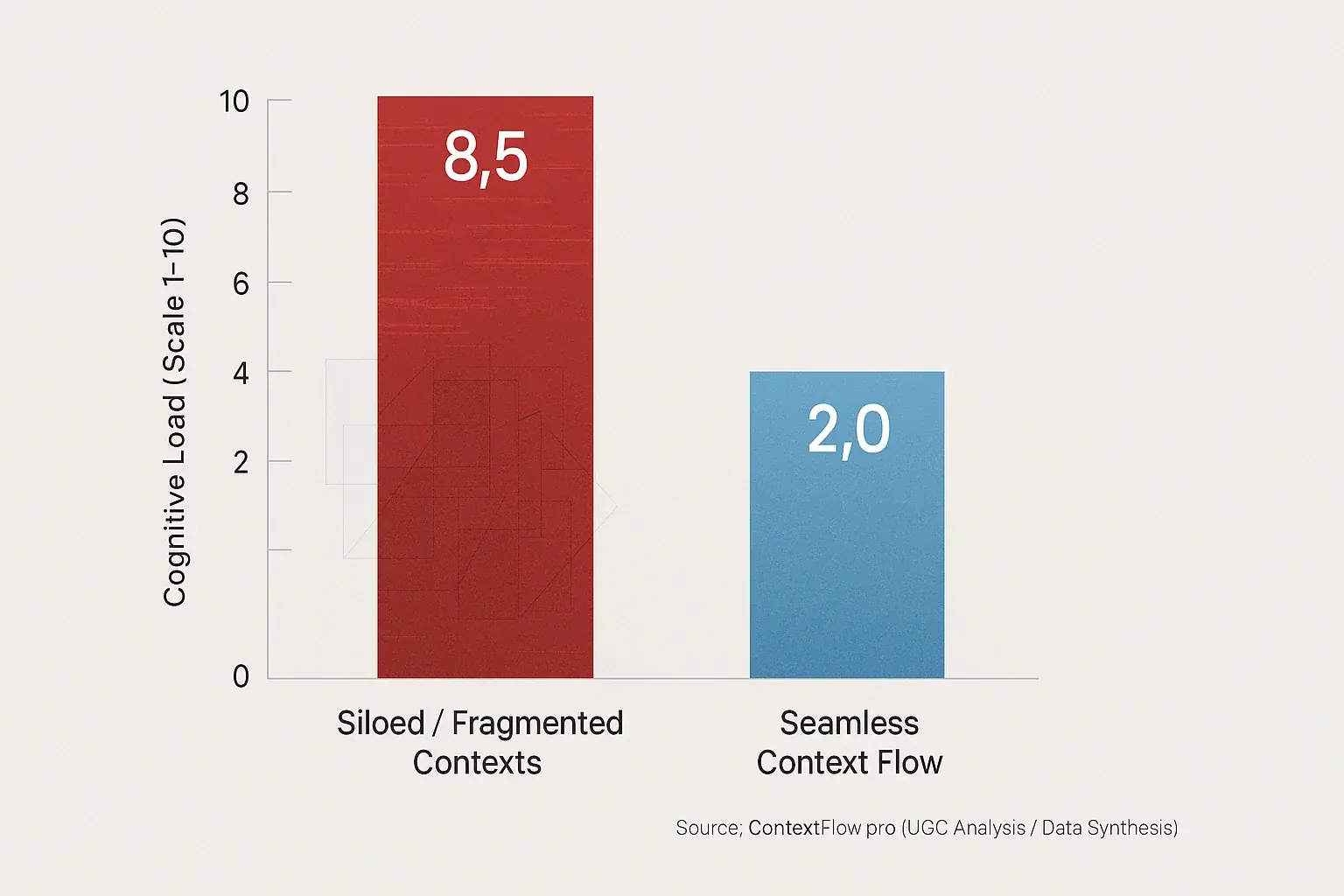
Each context switch levies a hidden tax: cognitive load. Your brain pays this mental overhead. This isn't mere tiredness. It actively depletes your focus. Your decision-making capacity also sharply diminishes.
Manual context reconstruction magnifies this load. Users describe a common sensation: their brain has too many tabs open. They constantly recall prior task details from another environment. Imagine this. You finish a physical whiteboard session. Then, you immediately join a complex digital meeting. Your brain still processes the whiteboard's visual data. Simultaneously, it tries to absorb new digital information. That is pure context overload. User reports confirm this daily struggle.
This constant mental juggling has clear costs. Decision fatigue sets in quickly. Errors increase. A deep exhaustion commonly concludes the workday. These are direct results of siloed digital-physical contexts. User accounts of hybrid work consistently detail this pattern.
Understanding this hidden cognitive tax is vital. It is the first step. Mitigation becomes possible. Better hybrid productivity begins here. Recognizing the problem empowers change.
Assess Your Context Silo: Take Our Self-Assessment
How Fragmented Is Your Hybrid Context?
Answer these quick questions to see how much context you might be losing between your physical and digital work. Be honest!
Our Context Silo Self-Assessment identifies your specific work fragmentation. This tool reveals the daily impact of siloed digital and physical contexts, helping you pinpoint unique friction points. Understand your challenges.
Understanding your personal context challenges is crucial. This knowledge forms the first step toward real solutions. Explore ContextFlow.pro for practical strategies to reduce information fragmentation and enhance focus.
Bridging the Divide: Reclaiming Context & Flow
Siloed digital and physical contexts constantly disrupt your workday. This information fragmentation directly impacts productivity. It quietly erodes your wellbeing. The frustration of your physical desk knowing more than your laptop is real. It's a silent productivity killer. User experiences confirm this daily. But this persistent challenge is solvable. You can reclaim your focus.
The good news? You do not need to accept this fragmented reality. Many professionals successfully bridge this digital-physical chasm. They achieve seamless context flow. They reclaim their concentration. ContextFlow.pro architects clear paths for this. We provide actionable frameworks and problem resolution strategies. Explore our insights. Discover rigorously evaluated tools. Start optimizing your workflow for improved work-life balance today.

